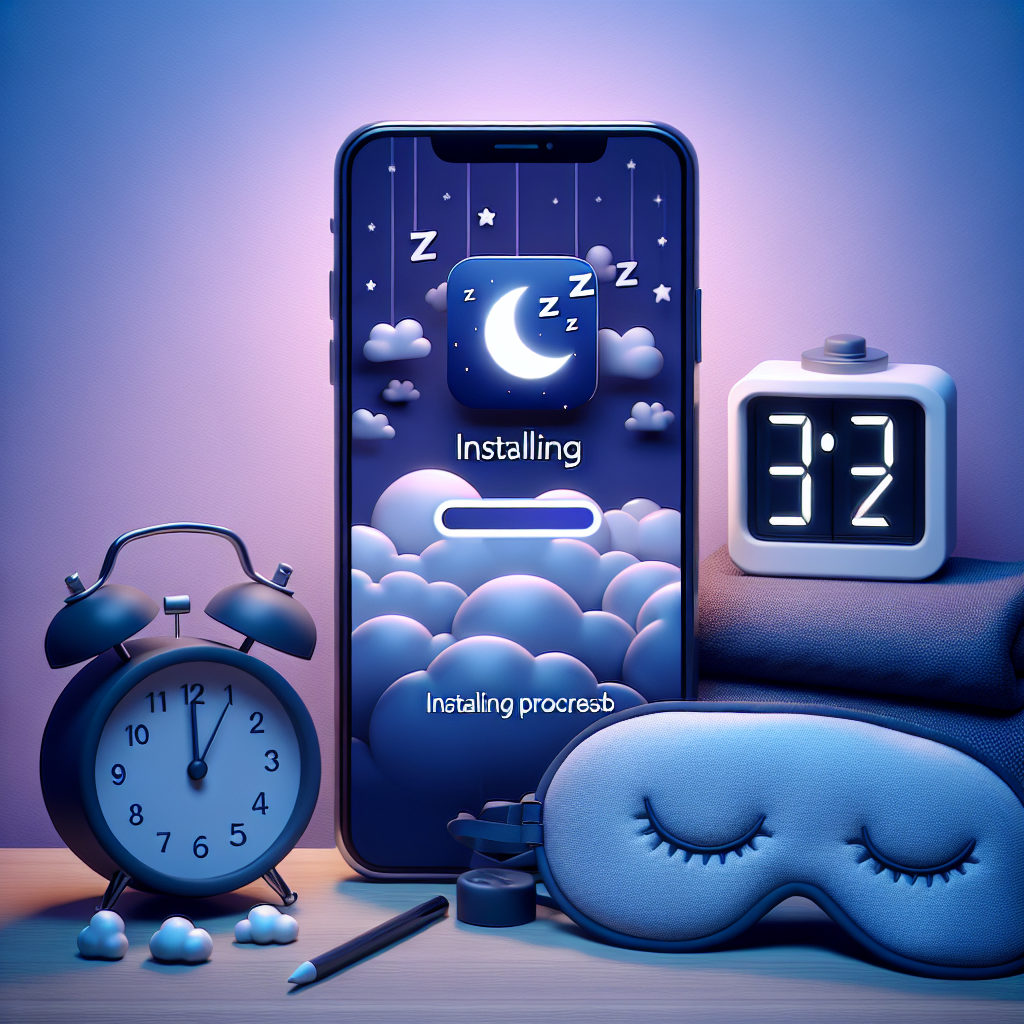Understanding Sleep Tracking Apps
Sleep tracking apps have gained considerable popularity due to increased awareness of the importance of sleep for overall health and well-being. These apps help you monitor your sleep patterns, analyze sleep quality, and often provide personalized insights to improve your rest.
Choosing the Right App
Before installation, spend some time exploring different sleep tracking apps available on your platform: Android or iOS. Popular options include:
- Sleep Cycle: Uses sound analysis to monitor sleep stages.
- Pillow: Integrates deeply with Apple Health and offers smart alarms.
- Sleep as Android: Includes snore detection and integrates with wearables.
- SleepScore: Utilizes sonar technology for detailed sleep analysis.
Factors to Consider
- Features: Determine which features matter to you. Look for options like sleep stage analysis, smart alarms, and integration with other health apps.
- User Interface: Choose an app with a clean, intuitive design for easier navigation.
- Compatibility: Ensure the app works seamlessly with your device or any wearable gadgets.
- User Reviews: Check app reviews and ratings to understand the experiences of other users.
- Pricing: Some apps are free with in-app purchases while others require a subscription. Choose based on your budget.
Installing the App
After deciding which sleep tracking app suits your needs, it’s time to install it.
For Android Devices
- Open the Google Play Store: Locate the Play Store app on your home screen or app drawer.
- Search for the App: Use the search bar at the top to type the name of your selected sleep tracking app.
- Select the App: Select the app from the search results to open its details page.
- Install: Tap the “Install” button. The app will begin downloading and installing automatically.
- Open the App: Once installed, tap “Open” or locate the app icon in your app drawer.
For iOS Devices
- Open the App Store: Find the App Store on your home screen.
- Search for the App: Use the search tab at the bottom to enter the name of your preferred app.
- Select the App: Choose the app from the list of results.
- Download: Tap the “Get” button. You may be prompted to authenticate via Face ID, Touch ID, or password.
- Open the App: Once downloaded, tap “Open” or find the app on your home screen.
Setting Up Your Sleep Tracking App
Once installed, you need to configure your sleep tracking app. Here’s a step-by-step guide to get you started.
Creating an Account
- Launch the App: Find and tap on the app icon to open it.
- Sign Up or Log In: Most apps will require you to create an account. You can often sign up using your Google or Apple account for convenience.
- Fill in Personal Information: Provide details like age, gender, and sleep preferences, which help tailor recommendations.
Granting Permissions
Many sleep tracking apps require specific permissions to function correctly.
- Microphone Access: This allows the app to record ambient sounds or monitor snoring.
- Health Data Access: If you’re using Apple Health or Google Fit, you may be prompted to grant health data permissions.
- Notifications: Allow notifications to receive reminders and alarms tailored to your sleep schedule.
Customizing Settings
A well-configured app enhances its effectiveness in tracking your sleep.
- Setting Sleep Goals: Some apps allow you to set personal sleep goals (e.g., 8 hours a night).
- Alarm Settings: Customize your alarm time and choose a gentle wake-up option when you are in a light sleep stage.
- Sleep Notes: Record sleep-related notes, like food intake or stress levels, which help correlate lifestyle changes with sleep quality.
Connecting Wearables
If you own a wearable device (like a smartwatch or fitness band), connect it to your sleep tracking app to enhance data accuracy.
- Navigate to Settings: Open the app’s settings and find the Data Integration or Connections section.
- Select Your Wearable: Tap on the option for your specific device and follow the prompts to connect via Bluetooth or app authorization.
- Sync Data: Ensure you sync data correctly to receive consolidated insights and analytics.
Daily Usage Tips
Using a sleep tracking app effectively involves consistent daily habits.
- Keep your device near your bed: Most apps require your phone to be on your nightstand to accurately monitor your movements while you sleep.
- Stick to a Schedule: Go to bed and wake up at the same time daily for better sleep quality measurements.
- Review Analytics: Regularly analyze your sleep reports to recognize patterns and identify potential issues.
Troubleshooting Common Issues
If you encounter problems using your sleep tracking app, consider the following:
- Inaccurate Data: Ensure your phone is charging and positioned correctly. Regular calibration, if offered by the app, may help.
- Connectivity Issues: Check Bluetooth settings if syncing with wearables fails.
- App Crashes: Keep your app updated and restart your device if issues persist.
Maximizing Sleep Quality
Using a sleep tracking app should be part of a holistic approach to improving sleep quality.
- Limit Screen Time: Reduce exposure to screens before bed. Consider using blue light filters.
- Maintain a Sleep-Friendly Environment: Keep your bedroom dark, cool, and quiet.
- Adopt Relaxation Techniques: Implement methods like meditation or deep-breathing exercises to aid relaxation before sleep.
Conclusion (Not Applicable)
By following these steps, you can successfully install and utilize a sleep tracking app to monitor and improve your sleep patterns, while enhancing your understanding of your sleep health.
